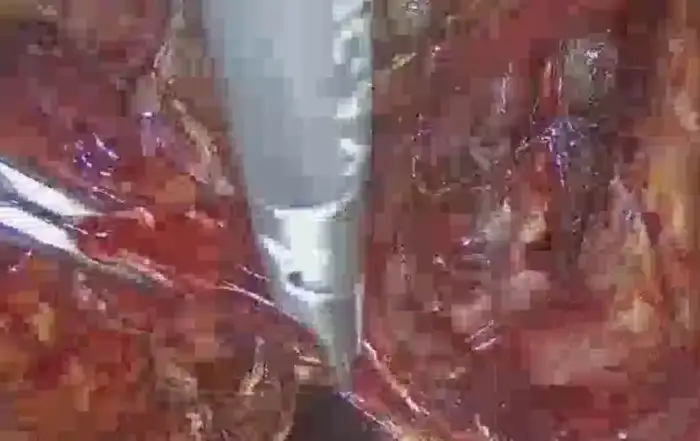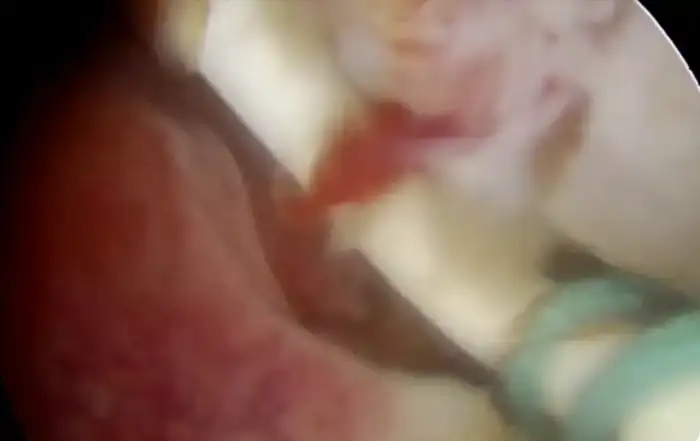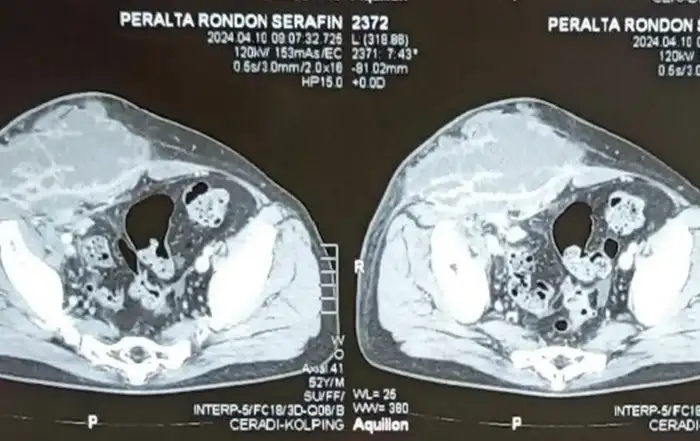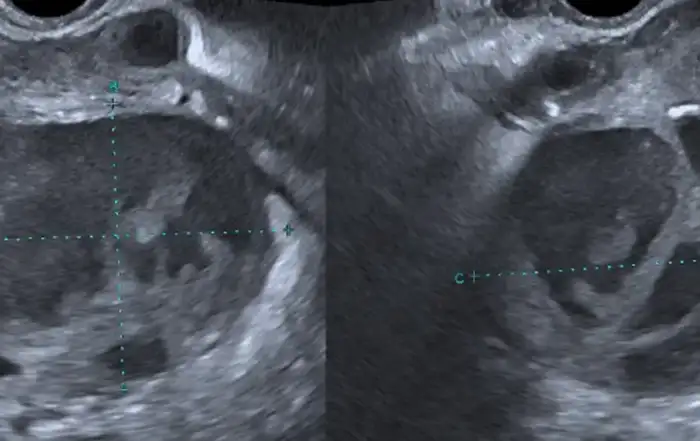Authors / metadata
DOI: 10.36205/trocar5.2024014
Abstract
Background: Bladder endometriosis is the presence of endometrial glands and stroma in the detrusor muscle. The base and dome of the bladder are the areas most often impacted. Gynecologists can perform surgical treatment for bladder endometriosis. However, the closer the endometriosis nodule is to the orifice of the ureter, the more difficult the surgery.
Objectives: The aim of this video article is to show whether a ureter can be preserved when the endometriosis nodule lies close to the ureter orifice.
Materials and Method: A case of 29-year-old woman with bladder endometriosis on the base and right bladder wall is presented.
Result: No complications occurred. The urinary symptoms disappeared immediately. The patient was discharged in good health.
Conclusion: This video article shows that a ureter can be preserved even when the endometriosis nodule lies close to the orifice of the ureter, provided there is neither hydronephrosis nor ureter obstruction.
Introduction
Bladder endometriosis is the presence of endometrial glands and stroma in the detrusor muscle. The base and dome of the bladder are the most often impacted areas (1). However, in most cases, the bladder mucosa is unaffected (2). The urinary tract is one of the most frequently impacted extragenital organ systems by endometriosis. The prevalence of endometriosis in all women is 0.3-12%, while it is 19-53% in women with DIE (3-5). Gynecologists can perform surgical treatment for bladder endometriosis. However, the closer the endometriosis nodule is to the orifice of the ureter, the more difficult the surgery. Laparoscopic partial cystectomy seems to be an appropriate method for improving urinary symptoms (6-9). This surgical approach requires excellent laparoscopic skills (10). The aim of this video article is to show whether a ureter can be preserved when the endometriosis nodule lies close to the orifice of the ureter.
Patient and Method
A 29-year-old woman attended the endometriosis center because of severe dysuria and hematuria. The vaginal and ultrasound examination revealed deep infiltrating endometriosis of the bladder base and wall on the right side and right pelvis wall. There was neither hydronephrosis nor ureter dilatation. Since the patient had a current fertility desire, hormone therapy was not an option for her. A surgical approach was discussed. The patient was informed about the radicality and potential complications of the procedure. The surgery was performed under general anesthesia. The bladder dome was unsuspicious, unlike most cases of bladder endometriosis. An endometriotic nodule was detected between the right bladder wall and the right pelvic wall. To reach this nodule, an enhanced dissection was required. After the opening of the vesico-vaginal, Yabuki, medial para vesical, and Okabayashi spaces, the nodule could be presented. The endometriotic nodule was completely removed, taking into account the right ureter. The ureter remained safe. The incision was closed with a Vicryl 2-0 thread. After the procedure, the patient had a bladder catheter for 10 days.
Results
No complications occurred. The urinary symptoms disappeared immediately. The patient was discharged in good health.
Discussion
Bladder endometriosis is a rare condition. However, for patients with dysuria and hematuria, it should be considered, especially if a urinary infection is absent (11). Hormone therapy may be suboptimal for bladder endometriosis and associated symptoms. On the other hand, hormone therapy only achieves temporary symptom suppression and does not completely cure the endometriotic nodule. For this reason, nodule excision may be required (10). A complete resection of the endometriotic nodule is associated with excellent long-term results in terms of symptom relief and recurrence. In these cases, a partial cystectomy is an effective procedure (12). Typically, a ureter reimplantation is recommended if the distance between the nodule and the ureter orifice is less than 2 cm [10]. However, if there is no ureter obstruction or hydronephrosis, one can attempt a ureter-preserving approach. In this video case report, the laparoscopic approach to ureter preservation in cases of unfavorable bladder endometriosis location is demonstrated. In contrast to resection of bladder endometriosis on the dome, in the present case, a wide dissection and good knowledge of female pelvis anatomy are required. It is recommended to avoid a ureter reimplantation in every case, if possible.
Conclusion
This video article shows that a ureter can be preserved even when the endometriotic nodule lies close to the orifice of the ureter, provided there is neither hydronephrosis nor ureter obstruction. However, excellent laparoscopic skills and knowledge of female pelvis anatomy are mandatory.





